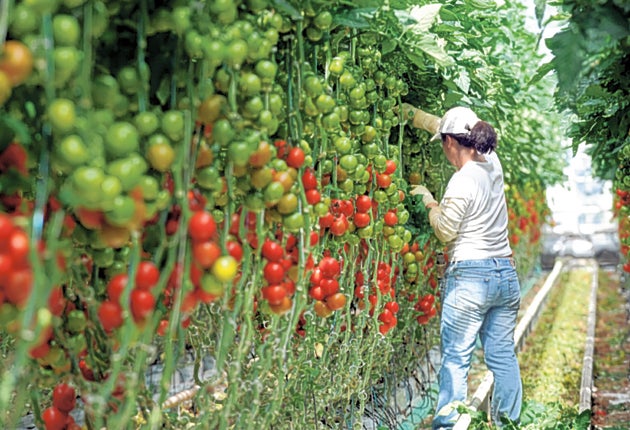Italy's disappearing tomatoes
The Italian heatwave has caused pomodoro production to drop by a quarter. John Phillips reports from Rome

A new chapter is about to be added to the history of Italian disasters. It may not quite be up there with the Fall of Rome or Vesuvius erupting, but the Great Tomato Massacre of 2010 is very bad news indeed for a country that has the humble but versatile pomodoro at the heart of its culinary life.
The farmers' trade union, Coldiretti, said yesterday that production of the tomato, used religiously in Italian kitchens and in tinned sauces and purées spicing up the daily bowls of pasta, was down by as much as 25 per cent due to exceptionally high temperatures. After getting battered by the heavy rains that pounded much of Italy in June, the plants are now being scorched. "The heat has led to a tomato massacre," Coldiretti said. The average harvest of pomodori per hectare of land will tumble from 80,000kg last year to an average of 60,000kg this year, said the union statement.
Rolando Manfredini, a food expert working for Coldiretti, said: "Above 30C, plants become stressed and are no longer able to grow, despite irrigation. The fields have been caught in a pincer of extreme weather conditions – first the torrential rains last month flooded the fields and prevented roots developing, while now the heat and humidity are weakening the tomatoes, which dry up, making flowers and fruit fall. A reduction in yields of 20 per cent is disastrous for tomato farmers, as their profits are well below 20 per cent."
Prices in shops could increase because of speculation by wholesalers, who are often quick to take advantage of such slumps in output, Mr Manfredini added. For every euro spent on food products in Italy, only 17 cents ends up in farmers' pockets compared to 25 cents around five years ago, he said.
Irate Italian farmers took to the streets last week to demand government support. About 10,000 peasant farmers from the south marched through the piazzas of the Apulian port city of Bari on Friday, protesting against the cuts in agricultural subsidies that form part of the centre-right coalition's austerity budget.
Italian dairy farmers, meanwhile, report that their cows are producing 15 per cent less milk than normal. The ideal temperature for cattle is between 2C and 24C rather than the current high 30s and even mid-40s. The effect of the heat, aggravated by humidity, means the animals eat little, drink a lot and produce less milk.
Farmers have set up showers, fans and air conditioning in their cowsheds, as well as giving the cattle potassium salts to eat in their foodstuffs. These measures are all increasing production costs, union officials said.
But farmers may get some consolation in the autumn. Because of the heat, the outlook for the grape and olive harvests is good, assuming there are no more freak weather conditions. "Wine and olive production should be good, but we'll have to wait and see what the meteorological conditions are," Mr Manfredini said.
Join our commenting forum
Join thought-provoking conversations, follow other Independent readers and see their replies
Comments
Bookmark popover
Removed from bookmarks